Jacqueline Woodson’s Another Brooklyn is a powerful exploration of friendship, identity, and resilience, set against the vibrant yet challenging backdrop of 1970s Brooklyn․
1․1 Overview of the Novel
Another Brooklyn is a poignant novel by Jacqueline Woodson, exploring themes of friendship, identity, and resilience․ Set in 1970s Brooklyn, the story follows August, a young African American girl, and her close-knit group of friends—Sylvia, Angela, and Gigi—as they navigate the challenges of adolescence in a rapidly changing neighborhood․ The novel delves into the complexities of racial identity, the bonds of female friendship, and the struggles of growing up in a world marked by both hope and danger․ Woodson’s lyrical prose and non-linear narrative structure create a vivid portrait of Brooklyn as a character in itself, blending memories of the past with the realities of the present․ This National Book Award finalist is a powerful exploration of what it means to belong and to find one’s place in the world․
1․2 Author Background: Jacqueline Woodson
Jacqueline Woodson is a celebrated American author known for her thought-provoking works that explore themes of race, identity, and social justice․ Born in Ohio and raised in South Carolina and New York, Woodson’s experiences growing up in diverse environments deeply influence her writing․ She has authored numerous books for children, young adults, and adults, earning widespread acclaim and awards, including the National Book Award and the Newbery Honor․ Woodson’s writing often reflects her own life, blending personal narratives with broader societal issues․ Her ability to transcend genres has solidified her reputation as a versatile and impactful storyteller․ Her work continues to resonate with readers of all ages, addressing universal themes through a uniquely personal lens․
1․3 Historical Context: 1970s Brooklyn
The 1970s Brooklyn depicted in Another Brooklyn is a complex tapestry of hope and peril․ The decade was marked by social and economic challenges, with neighborhoods reflecting the cultural richness of their residents․ Yet, beneath the vibrant streets, dangers lurked—menacing figures in dark hallways, the haunting presence of ghosts, and the mysterious disappearance of mothers․ Religion became a source of solace for many, including August’s father, who sought comfort in faith․ This duality of Brooklyn—its promise of future brilliance for young girls like August and her friends, alongside its darker realities—shapes the narrative, offering a poignant exploration of growing up in a world defined by both love and loss․
Major Themes in “Another Brooklyn”
Race, identity, friendship, and resilience are central themes․ The novel explores the challenges of growing up in a world shaped by both love and loss, revealing profound emotional depth․
2․1 Race and Identity
Race and identity are central to Another Brooklyn, as August and her friends navigate a world where their Blackness is both a source of pride and a target of oppression․ Woodson skillfully portrays the complexities of racial identity through their experiences, showing how societal expectations and internalized beliefs shape their self-perceptions․ The novel highlights the struggles of growing up Black in a predominantly white world, where systemic racism and microaggressions are constant challenges․ Yet, it also celebrates the strength and resilience of African American culture, offering a powerful exploration of identity formation in a racially charged environment․
2․2 Female Friendship and Solidarity
In Another Brooklyn, the bond between August, Sylvia, Angela, and Gigi is a testament to the power of female friendship․ Their relationship serves as a sanctuary from the harsh realities of their world, offering mutual support and understanding․ Woodson portrays their friendship as a source of strength, enabling them to navigate racial, social, and personal challenges․ The girls’ shared experiences and confidences create a sense of unity and belonging, highlighting the resilience of female solidarity․ However, as they grow older, the pressures of their different paths strain their connection․ The novel beautifully captures the complexity of female friendships, showcasing their enduring impact despite life’s inevitable separations․
2․3 Coming of Age in a Challenging Environment
In Another Brooklyn, Jacqueline Woodson vividly portrays the struggles of coming of age in a volatile 1970s Brooklyn․ August and her friends navigate a world marked by both hope and danger, where street hazards, family conflicts, and societal expectations shape their identities․ The novel captures the fragility of adolescence, as the girls confront racial tensions, personal losses, and the complexities of growing up without maternal guidance․ Their experiences are intertwined with the broader social challenges of the time, making their journey a poignant reflection of resilience and adaptability․ Woodson’s prose masterfully conveys the tension between innocence and the harsh realities of their environment, creating a deeply human and relatable narrative of growth and transformation․
2․4 Memory and Nostalgia
Memory and nostalgia are central to the narrative of Another Brooklyn, as August revisits her past through vivid flashbacks․ Her return to Brooklyn after her father’s death triggers a flood of recollections about her childhood, friendships, and the challenges she faced․ The novel explores how memory shapes identity, revealing how August and her friends navigated racial tensions, family struggles, and societal expectations․ Woodson’s prose captures the bittersweet nature of nostalgia, blending the joy of shared moments with the pain of loss and longing․ The interplay of past and present highlights how memory becomes a lens through which characters understand their lives and the world around them․ This duality underscores the novel’s emotional depth and its exploration of resilience․
2․5 The Duality of Brooklyn: Hope and Danger
Brooklyn in the novel embodies a duality of hope and danger, reflecting the contrasting experiences of its characters․ While the neighborhood fosters optimism, with August and her friends envisioning a bright future, it also harbors peril․ The streets are fraught with risks, such as predatory men and family conflicts, underscoring the harsh realities of their environment․ This duality is further highlighted by the fathers’ reliance on religion as a source of hope amidst adversity․ Yet, the tragedy lies in how some characters lose their grip on hope, illustrating the fragile balance between aspiration and despair in Brooklyn’s vibrant yet unforgiving landscape․

Key Characters and Their Development
August, an anthropologist, revisits her past, reflecting on her journey with friends Sylvia, Angela, and Gigi, navigating identity, loss, and family dynamics․
3․1 August: The Protagonist’s Journey
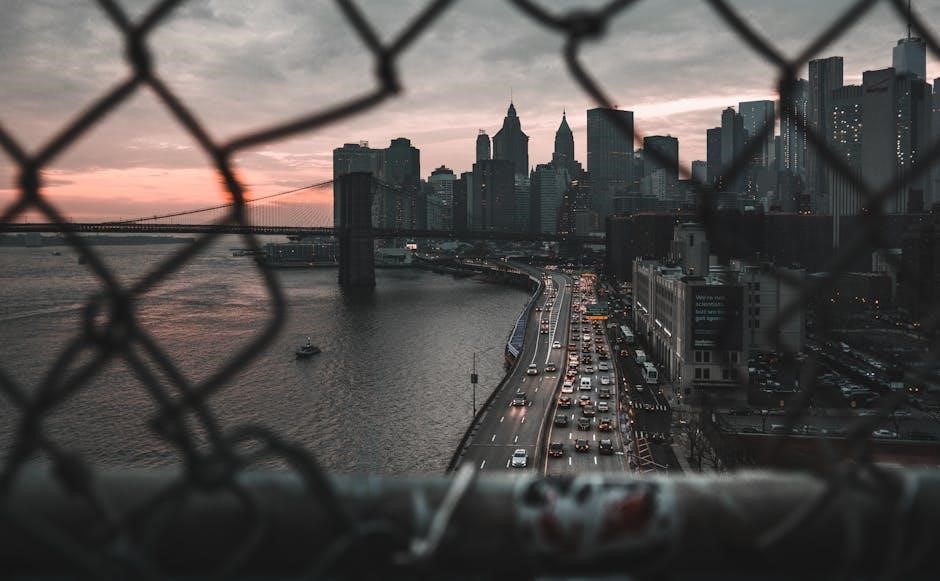
August, an anthropologist, embodies resilience and introspection․ Her return to Brooklyn after her father’s death triggers a flood of memories, revealing her childhood struggles and growth․ Through her journey, August confronts themes of race, identity, and friendship, showcasing her evolution from a vulnerable girl to a reflective woman․ Her anthropological lens adds depth to her understanding of cultural rituals and personal loss․ August’s story intertwines with her friends, forming a tapestry of shared experiences that define her path․ Her journey highlights the complexities of coming of age in a challenging environment and the enduring impact of her Brooklyn upbringing․
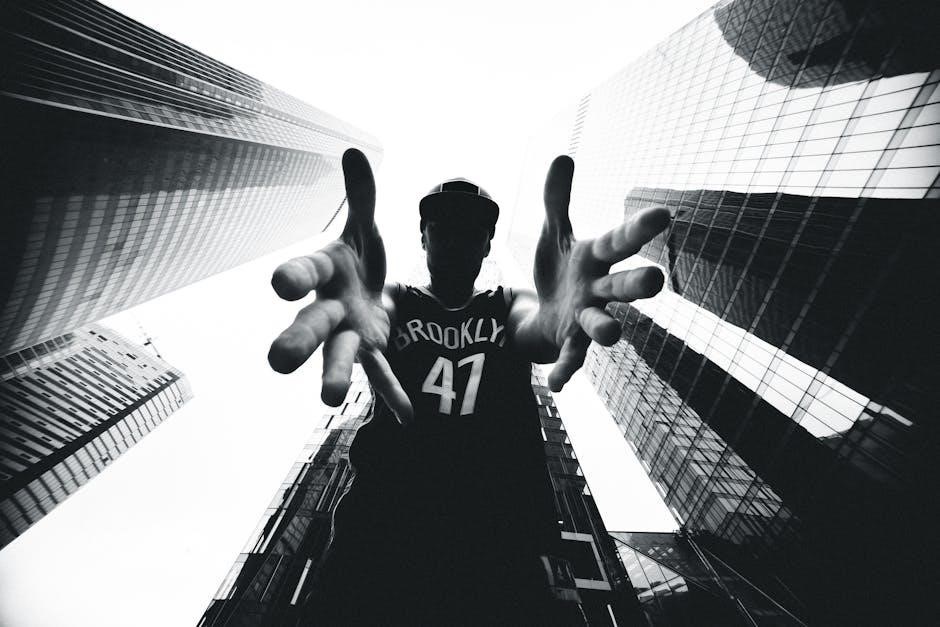
3;2 Sylvia, Angela, and Gigi: The Circle of Friends
Sylvia, Angela, and Gigi form a vibrant circle of friends whose bond with August shapes her journey․ Each brings unique qualities: Sylvia’s boldness, Angela’s practicality, and Gigi’s rebellious spirit․ Together, they navigate Brooklyn’s streets, sharing hopes and fears․ Their friendship offers a sense of belonging, countering the challenges of their environment․ Through their interactions, the novel highlights how these relationships define August’s identity and provide emotional support․ Their shared experiences, from youthful optimism to confronting dangers, illustrate the strength of female solidarity․ The group’s dynamics reveal individual strengths and vulnerabilities, showcasing how friendship becomes a lifeline in their formative years․ Their bond, though tested by time and circumstance, remains a cornerstone of August’s life, reflecting the enduring power of female connection․
3․3 The Role of Family and Community
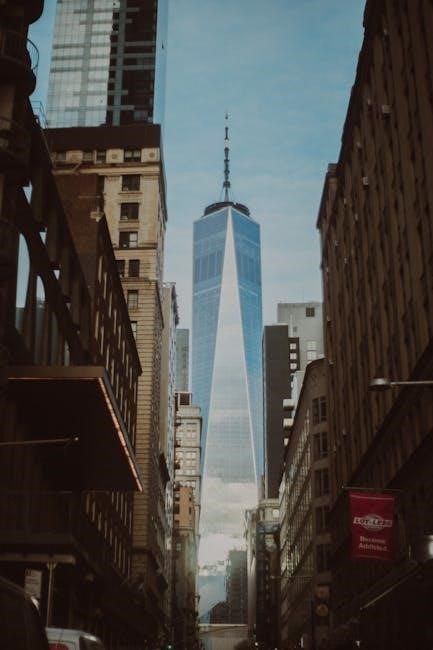
Families and communities in Another Brooklyn serve as both support systems and sources of tension․ August’s father, though well-meaning, struggles to fill the void left by her mother’s absence․ Her brother’s distant demeanor adds to the household’s emotional complexity․ The neighborhood acts as an extended family, with its residents offering comfort and shared experiences․ However, the community’s close-knit nature also brings challenges, such as gossip and judgment․ The interplay between family dynamics and community influences shapes August’s understanding of love, loss, and belonging․ These relationships underscore the novel’s themes of resilience and the enduring impact of those closest to us․ Through these portrayals, Woodson highlights the dual nature of family and community in shaping individual identity․
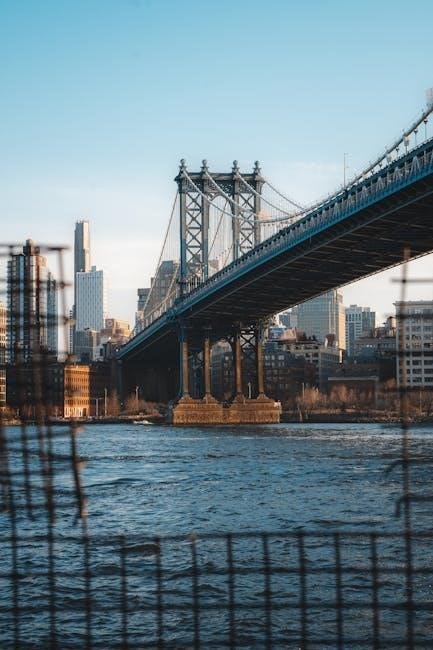
Setting: The Significance of Brooklyn
Brooklyn serves as both a nurturing and dangerous backdrop, reflecting the characters’ experiences․ Its cultural richness and vibrant neighborhoods shape their identities and struggles, embodying both hope and peril․
4․1 Brooklyn as a Character in the Novel
In Another Brooklyn, the borough itself emerges as a vivid character, shaping the lives of August and her friends․ Its streets, filled with cultural richness and vibrant energy, become a backdrop for their shared experiences․ Yet, beneath its nurturing facade, Brooklyn reveals its darker side—danger lurks in shadows, and the girls must navigate the perils of their neighborhood․ The setting is not just a location but an active force, influencing their identities, friendships, and struggles․ Woodson masterfully portrays Brooklyn as a place of contrasts, where hope and despair coexist, mirroring the complexities of the characters’ lives․ This duality makes Brooklyn a central, unforgettable presence in the story․
4․2 Neighborhoods and Their Cultural Impact
The neighborhoods of Brooklyn in Another Brooklyn are more than just settings; they are living, breathing entities that shape the cultural identity of the characters․ Each area, with its unique vibe and history, influences how August, Sylvia, Angela, and Gigi perceive the world․ From the bustling streets lined with music and art to the quieter corners where traditions thrive, these neighborhoods foster a sense of community and shared experience․ The cultural diversity of Brooklyn—its mix of sounds, smells, and stories—becomes a backdrop for the girls’ exploration of their own identities․ Woodson vividly captures how these neighborhoods act as incubators for creativity, resilience, and belonging, reflecting the broader tapestry of Brooklyn’s cultural richness․
4․3 The Intersection of Past and Present
In Another Brooklyn, the past and present intertwine seamlessly, creating a narrative that reflects the cyclical nature of life and memory․ August’s return to her childhood neighborhood sparks a flood of recollections, bridging the gap between her adolescence and adulthood․ Woodson masterfully weaves these temporal layers, showing how the Brooklyn of the 1970s continues to resonate in the present․ The novel highlights the enduring influence of early experiences on identity and understanding․ Through August’s journey, the reader witnesses how the past shapes the present, offering a profound exploration of memory’s role in self-discovery․ This interplay underscores the novel’s themes of nostalgia and the timeless essence of place․
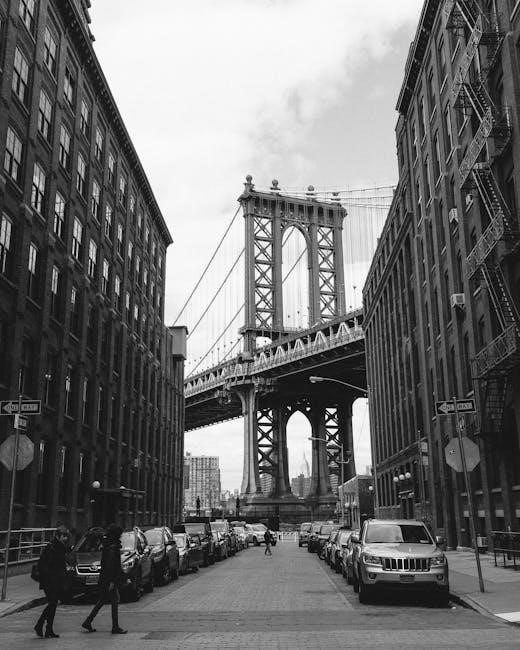
Literary Style and Structure
Jacqueline Woodson’s lyrical prose in Another Brooklyn blends vivid imagery with a non-linear narrative, creating a poetic yet intimate storytelling style that captures the essence of memory and place․
5․1 Woodson’s Use of Language and Imagery
In Another Brooklyn, Jacqueline Woodson employs a lyrical and evocative language that immerses readers in the world of 1970s Brooklyn․ Her imagery is both vivid and haunting, painting scenes of hope and danger with precision․ Woodson’s prose is poetic yet accessible, allowing the characters’ emotions and experiences to resonate deeply․ The use of sensory details, from the sounds of the neighborhood to the textures of the city, creates a rich tapestry that brings Brooklyn to life․ This masterful use of language not only reflects the characters’ inner worlds but also underscores the duality of their environment, blending beauty with hardship seamlessly․
5․2 Non-Linear Narrative and Flashbacks
Jacqueline Woodson’s Another Brooklyn employs a non-linear narrative, weaving past and present through August’s memories․ The story unfolds as August returns to Brooklyn after her father’s death, triggering a flood of recollections about her childhood and friendships․ Flashbacks seamlessly transition between her anthropologist present and her formative years in the 1970s․ This structure allows Woodson to explore themes of memory, identity, and loss while maintaining a dynamic pacing․ The interplay between past and present deepens the reader’s understanding of August’s journey, highlighting how her early experiences shape her adult perspective․ This narrative choice enhances the emotional resonance of the novel, making it a compelling exploration of personal and collective history․
5․3 The Role of Anthropology in the Story
August’s profession as an anthropologist significantly influences her narrative voice and perspective in Another Brooklyn․ Her studies of funeral traditions across cultures provide a unique lens through which she views her own experiences of loss and identity․ This academic background enriches the storytelling, as August reflects on rituals, memory, and the cultural fabric of her Brooklyn upbringing․ Her anthropological insights add depth to the novel’s exploration of grief, community, and personal history․ Woodson uses August’s expertise to bridge the gap between past and present, creating a narrative that feels both deeply personal and universally relatable․ Anthropology becomes a thematic thread, weaving together the story’s emotional and cultural layers․
Social and Cultural Issues
The novel tackles pressing issues like race, identity, and societal expectations, offering a poignant look at the challenges faced by African American women in 1970s Brooklyn․
6․1 Growing Up Without a Mother
August’s journey in Another Brooklyn is deeply shaped by the absence of her mother, who left when she was young․ This void influences her relationships and identity, as she navigates childhood without maternal guidance․ The novel portrays the emotional and psychological impact of this loss, highlighting how August and her brother struggle to cope with the absence․ Their father, seeking solace in religion, further complicates the family dynamics․ August’s experiences reflect the broader challenges of growing up without a mother, emphasizing themes of abandonment, resilience, and the quest for understanding․ The novel underscores how this absence shapes her worldview and relationships, particularly with her friends and community․
6․2 The Impact of Religion and Funeral Traditions
In Another Brooklyn, religion and funeral traditions serve as coping mechanisms for August and her family․ After her father’s death, August revisits her childhood neighborhood, where her anthropological studies of funeral rites across cultures resonate deeply․ The novel highlights how religious beliefs and rituals provide solace and structure amidst loss․ August’s father finds hope in religion, while her academic interest in funeral traditions reflects her attempt to understand and process grief․ These elements underscore the novel’s themes of memory, identity, and the search for meaning in a world shaped by both love and loss․ Funeral traditions, in particular, become a bridge between August’s past and present, offering a way to honor her heritage and confront her emotions․
6․3
6․3 Street Danger and Family Conflict
In Another Brooklyn, the streets of 1970s Brooklyn are portrayed as a place of both hope and peril․ August and her friends face constant threats, such as men targeting innocent girls in dark hallways, creating a sense of unease․ These dangers are intertwined with family conflicts, as August’s household struggles with the absence of her mother and her father’s reliance on religion for solace․ The novel vividly depicts how external threats and internal family dynamics shape the lives of its characters, highlighting the resilience needed to navigate such challenges․ These elements underscore the harsh realities of growing up in a world where danger and dysfunction are ever-present․
Reception and Awards
Another Brooklyn was a 2016 National Book Award finalist, earning critical acclaim for its poignant portrayal of friendship and identity in 1970s Brooklyn․
7․1 National Book Award Nomination
Jacqueline Woodson’s Another Brooklyn received a National Book Award nomination in 2016, recognizing its profound exploration of race, identity, and female friendship in 1970s Brooklyn․ This honor underscored the novel’s emotional depth and its ability to resonate with readers, solidifying Woodson’s reputation as a masterful storyteller․ The nomination also highlighted the book’s relevance in contemporary literature, as it delves into themes that remain timely and universal․ Another Brooklyn stands as a testament to Woodson’s skill in crafting narratives that capture the complexities of human experience, earning its place among the year’s most distinguished works․
7․2 Critical Acclaim and Reviews
Another Brooklyn garnered widespread critical acclaim for its lyrical prose and poignant portrayal of female friendship, race, and identity․ Reviewers praised Woodson’s ability to weave vivid memories of 1970s Brooklyn, creating a narrative that resonates deeply with readers․ The novel was celebrated for its emotional depth, with critics highlighting its nuanced exploration ofComing-of-age struggles and the complexities of human relationships․ Many noted how Woodson’s storytelling captures the essence of a transformative era, blending hope and hardship seamlessly․ The book’s evocative language and relatable characters further solidified its place in contemporary literature, earning it a reputation as a compelling and emotionally charged read․
7․3 Comparison to Other Works by Woodson
Jacqueline Woodson’s Another Brooklyn shares thematic similarities with her earlier works, such as Red at the Bone, in its exploration of family, identity, and social justice․ However, this novel marks a return to adult fiction after two decades, offering a more mature reflection on her signature themes; Like her young adult literature, it captures the essence of Coming-of-age struggles, but with a deeper, nostalgic lens․ Woodson’s lyrical prose and nuanced character development remain consistent, yet Another Brooklyn stands out for its focus on female friendship and the historical backdrop of 1970s Brooklyn․ This work reinforces her reputation as a masterful storyteller capable of transcending age categories while maintaining her unique voice․

Educational and Cultural Significance

Another Brooklyn holds significant educational and cultural value, offering insights into 1970s African American experiences and social justice, making it a powerful tool in academic curricula․
8․1 The Novel in Academic Curricula
Another Brooklyn is widely adopted in academic curricula for its nuanced portrayal of race, identity, and social justice․ Its exploration of 1970s Brooklyn offers students a lens to examine historical and cultural context, fostering critical thinking about societal issues․ The novel’s themes resonate with contemporary discussions on inequality and resilience, making it a valuable resource for diverse classrooms․ Woodson’s lyrical prose and non-linear narrative structure also serve as a teaching tool for literary analysis․ By integrating Another Brooklyn into syllabi, educators provide students with a rich text that bridges personal and collective histories, encouraging deeper engagement with the African American experience and urban life․
8․2 Representation of African American Experiences
Another Brooklyn offers a vivid and authentic portrayal of African American life in the 1970s, capturing the complexities of race, identity, and community․ Woodson’s narrative voices the struggles and triumphs of Black girls navigating a world fraught with societal challenges, while highlighting their resilience and cultural richness․ The novel underscores the importance of representation by centering Black experiences, offering readers a mirror to their own lives and a window into the broader African American community․ Through its characters and setting, Another Brooklyn challenges stereotypes and celebrates the diversity of Black culture, making it a significant contribution to the literary canon․
8․3 The Novel’s Contribution to Contemporary Literature
Another Brooklyn significantly enriches contemporary literature by offering a poignant and deeply personal exploration of race, identity, and memory․ Woodson’s lyrical prose and non-linear narrative structure create a unique reading experience, blending the intimate with the universal․ The novel’s ability to evoke both individual and collective histories makes it a powerful contribution to the literary canon․ By centering African American experiences, Woodson challenges stereotypes and broadens the scope of contemporary storytelling․ Her work not only resonates with readers but also influences other writers, solidifying her role as a leading voice in modern literature․ Another Brooklyn stands as a testament to the enduring power of storytelling in capturing the human condition․
Another Brooklyn is a poignant exploration of identity, friendship, and resilience, offering a vivid portrait of 1970s Brooklyn․ Its emotional depth and lyrical prose leave a lasting impact․
9․1 The Lasting Impact of “Another Brooklyn”

Jacqueline Woodson’s Another Brooklyn leaves an indelible mark on readers with its poignant exploration of identity, friendship, and resilience․ The novel’s vivid portrayal of 1970s Brooklyn, coupled with its lyrical prose, resonates deeply, offering insights into the complexities of growing up in a world shaped by both love and loss․ Woodson’s ability to weave personal and collective memories creates a universal story that transcends time and place․ The book’s emotional depth and its unflinching look at the challenges faced by its characters ensure its relevance today, making it a significant contribution to contemporary literature․ Its exploration of hope, danger, and the power of human bonds ensures its lasting impact on readers․
9․2 The Novel’s Relevance Today
Another Brooklyn remains deeply relevant today, offering a timeless exploration of identity, race, and female solidarity․ Its portrayal of resilience in the face of systemic inequality resonates with contemporary discussions on social justice․ The novel’s focus on the strength of friendships and the challenges of growing up in a marginalized community continues to inspire readers․ Woodson’s vivid depiction of Brooklyn as a place of both hope and danger mirrors the duality of urban life today․ The book’s themes of memory, loss, and the search for belonging are universal, making it a powerful reflection of ongoing struggles and aspirations; Its relevance lies in its ability to connect past and present, ensuring its continued impact on readers․
9․3 Final Thoughts on Woodson’s Craft
Jacqueline Woodson’s craft in Another Brooklyn is a masterful blend of poetic prose and deeply human storytelling․ Her ability to weave personal and communal histories creates a vivid tapestry of 1970s Brooklyn․ Woodson’s non-linear narrative and rich imagery evoke a profound sense of place and memory, drawing readers into August’s world․ Her exploration of race, identity, and female friendship is both intimate and expansive, resonating with universal themes․ Woodson’s writing is both accessible and lyrical, making complex emotions and experiences relatable․ Her work not only reflects the past but also speaks to the present, solidifying her place as a vital voice in contemporary literature․ Another Brooklyn is a testament to her skill in capturing the essence of the human condition․
